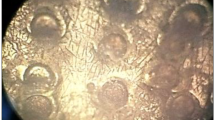Abstract
There have been many studies on three-dimensional (3D) printing using metal compounds. However, 3D printing using a metal compound has disadvantages in that it increases the cost for supplying metal materials. A method of using slag which is a recyclable material has been proposed to reduce costs. With the growing demand for additive manufacturing using by-products, slag has gained attention as a diverse recycling material for 3D printing technologies. A new fabrication approach was analyzed for producing porous bodies via additive manufacturing for blending slag and reinforced metals. However, because of its low quality due to low strength, low durability, and structural defeats, the amount of slag generated is high, and its usability remains uncertain. Also, slag is an excellent material with a huge potential for producing structures with high mechanical properties, and limited research in the area of slag recycling has been conducted due to difficulties in sintering the iron by-products. To develop a recycling approach that utilizes slag in 3D printing powders, a study to increase the industrial usability by mixing slag and ceramic beads was described. A method was presented to compare the physical properties of 3D printed slag parts with the physical properties of those generated by blending iron slag, alumina, and zirconia. In order to find the mixing ratio with the optimum physical properties, the average particle size, bending stress, and maximum compressive stress were tested. The combination ratio to obtain the highest strength was when iron slag powder was 40% and alumina was 60%. In addition, the specimens by composition to which the stress test was applied were cut to analyze the tissue under a microscope. It is thought that cracking in the sintered structure decreases and density increases by mixing alumina and zirconium, contributing to increased strength. When a ceramic bead composed of alumina and zirconium is mixed with slag to form a composite material, a metal compound having a level of physical properties that can be used as a material for 3D printing can be produced. Furthermore, a novel concept of producing lightweight structural materials via additive manufacturing, which entails a fabrication process whereby high-strength metals are stacked inside hollow base steels, was proposed.













Similar content being viewed by others
References
B. Xi, R. Li, X. Zhao, Q. Dang, D. Zhang, W. Tan, Resour. Conserv. Recycl. 139 (2018) 15–16.
J. Vijayaraghavan, A.B. Jude, J. Thivya, Resour. Policy 53 (2017) 219–225.
S. Nagarajan, B.J.R. Raj, Int. J. Eng. Manage. Res. 7 (2017) 246–248.
Y. Xia, X. Guo, J. Li, D. Fan, S. Wang, Steel Res. Int. 89 (2018) 1800104.
T. Koh, S.W. Moon, H. Jung, Y. Jeong, S. Pyo, Sustainability 10 (2018) 284.
C.S.Y. Jee, Z.X. Guo, J.R.G. Evans, N. Özgüven, Metall. Mater. Trans. B 31 (2000) 1345–1352.
S.H. Kim, S.M. Kim, S.H. Noh, J.P. Kim, J.H. Shin, S.Y. Sung, J.K. Jin, T. Kim, J. Korean Powder Metall. Inst. 22 (2015) 197–202.
E.J. Hunt, C. Zhang, N. Anzalone, J.M. Pearce, Resour. Conserv. Recycl. 97 (2015) 24–30.
C. Baechler, M. DeVuono, J.M. Pearce, Rapid Prototyping J. 19 (2013) 118–125.
X. Tian, T. Liu, Q. Wang, A. Dilmurat, D. Li, G. Ziegmann, J. Clean. Prod. 142 (2017) 1609–1618.
Q. Shi, K. Yu, X. Kuang, X. Mu, C.K. Dunn, M.L. Dunn, T. Wang, J.J. Qi, Mater. Horiz. 4 (2017) 598–607.
T.M. Wang, J.T. Xi, Y. Jin, Int. J. Adv. Manuf. Technol. 33 (2007) 1087–1096.
Y. Zhang, K. Chou, Proc. IMechE, Part B: J. Eng. Manuf. 222 (2008) 959–968.
A. Boschetto, V. Giordano, F. Veniali, Rapid Prototyping J. 19 (2013) 240–252.
B. AlMangour, D. Grzesiak, J.M. Yang, J. Alloy. Compd. 680 (2016) 480–493.
B. AlMangour, D. Grzesiak, J.M. Yang, Mater. Des. 104 (2016) 141–151.
Q. Wei, S. Li, C. Han, W. Li, L. Cheng, L. Hao, Y. Shi, J. Mater. Process. Technol. 222 (2015) 444–453.
B. AlMangour, M.S. Baek, D. Grzesiak, K.A. Lee, Mater. Sci. Eng. A 712 (2018) 812–818.
F. Deirmina, B. AlMangour, D. Grzesiak, M. Pellizzari, Mater. Des. 146 (2018) 286–297.
M.E. Parron-Rubio, F. Perez-García, A. Gonzalez-Herrera, M.D. Rubio-Cintas, Materials 11 (2018) 1029.
V.V. Prokofieva, The use of associated iron ore enrichment products in construction in the North, Leningrad, 1986.
V.A. Gurieva, Physical and chemical studies of the use of dunites in decorative and finishing ceramics, Orenburg, Russia, 2007.
O. Gencel, M. Sutcu, E. Erdogmus, V. Koc, V.V. Cay, M.S. Gok, J. Clean. Prod. 59 (2013) 111–119.
T.A. Rodrigues, V.R. Duarte, D. Tomás, J.A. Avila, J.D. Escobar, E. Rossinyol, N. Schell, T.G. Santos, J.P. Oliveira, Addit. Manuf. 34 (2020) 101200.
T.A. Rodrigues, V. Duarte, J.A. Avila, T.G. Santos, R.M. Miranda, J.P. Oliveira, Addit. Manuf. 27 (2019) 440–450.
J. Zhao, M. Zhang, Y. Zhu, X. Li, L.J. Wang, J.C. Hu, Mater. Des. 163 (2019) 107550.
E.C. Hammel, O.L.R. Ighodaro, O.I. Okoli, Ceram. Int. 40 (2014) 15351–15370.
J.P. Oliveira, A.D. LaLonde, J. Ma, Mater. Des. 193 (2020) 108762.
Author information
Authors and Affiliations
Corresponding author
Rights and permissions
About this article
Cite this article
Kim, H., Lee, S. Printability and physical properties of iron slag powder composites using material extrusion-based 3D printing. J. Iron Steel Res. Int. 28, 111–121 (2021). https://doi.org/10.1007/s42243-020-00475-0
Received:
Revised:
Accepted:
Published:
Issue Date:
DOI: https://doi.org/10.1007/s42243-020-00475-0




